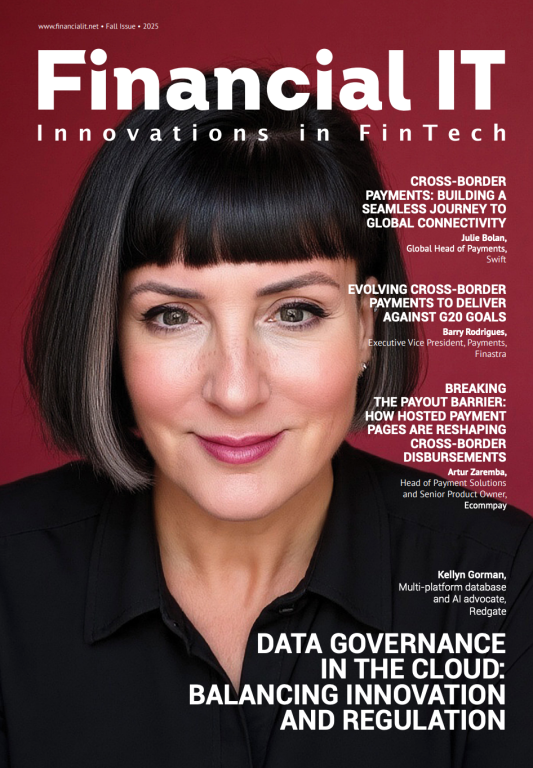Why AI Is the Ultimate Game Changer for Customer Retention in Banking

- Carter Busse, CIO at Workato
- 25.02.2025 06:15 pm #AI #CustomerRetention
Customer experience in the banking and finance industry looks radically different from what it was fifteen years ago. Gone are the days of visiting physical banks for transactions such as cashing a cheque, transferring funds, or even more complex tasks such as setting up a new account. Almost every aspect of banking can now be done remotely, and with that comes an increased need for a strong customer service team available to support and answer every question or query.
Consider the customer service offered by a banking app. Most high-street bank accounts now come with a mobile application that offers a seamless customer experience (CX), featuring personalised insights into spending habits and savings goals. Not to mention integrations with services such as Apple Pay to make the buying experience even more convenient for the ever-busy consumer.
However, customer expectations will inevitably continue to rise, especially in times of financial uncertainty when customers may be feeling the pinch more than usual, and therefore rely on a more supportive and personalised experience with their bank.
For this reason, many financial organisations are rapidly turning to seamless integration and management of systems, data, apps, and experiences, also known as enterprise orchestration, to boost efficiency and offer a superior CX ultimately geared toward customer satisfaction.
Prioritising long-term loyalty
Financial organisations are under huge pressure to deliver a curated, quality customer experience, so the efficiency provided by AI orchestration is highly impactful. There’s no room for error, as recent research found that over 50 percent of consumers would switch to a competing bank after just one unsatisfactory interaction. With rising competition from fintech and digital banks, high-street banks need to be able to meet the customer demand for high quality, personalised interactions and bolster resources during busy periods, such as the holiday season.
Against the backdrop of the cost-of-living crisis, inflation, and general economic uncertainty, orchestration is an invaluable tool for customer retention. Banks cannot afford to lose the revenue of their existing clientele, especially as attracting new customers has become increasingly competitive. Marketing, promotions, and onboarding efforts add up quickly, and the cost of acquiring new customers can be up to five times higher than retaining existing customers. The pressure for organisations to deliver superior customer service and keep their clientele satisfied means that customer retention is the fastest-growing priority for companies implementing orchestration, as found by Workato’s 2024 Automation Index.
Why orchestration?
AI-driven orchestration is the ideal solution for a smooth customer experience as automation is inherently an experience-based process. Each element of orchestration translates to a smoother experience for the customer. Therefore, every time an organisation invests in orchestration, they are investing in the customer experience. In other words, AI helps to create intelligent, efficient services that maintain customer relationships, all of which are vitally important for banks.
However, orchestration is not only a valuable resource for banking. Organisations across multiple sectors are also beginning to understand the impact that orchestration can have on customer retention. Workato’s Index revealed a 226% growth of automation in customer support and calculated that, out of all automated processes, 30% focus on either the customer, employee, or end-user experience. Orchestration is being implemented successfully to track issues, field customer inquiries, and dramatically increase how quickly customer service teams assign the appropriate solution.
Orchestration in action
There are many ways orchestration can be implemented to benefit customer retention, enhancing efficiency across every stage of the customer experience, but there are also other ways that banks can see the benefits of orchestration in action.
Orchestration can be used to connect systems and workflows to enable simplified operations; from automated credit checks and document verification for loan applications to compiling and monitoring real-time data with customer information to detect suspected fraud. Orchestration can also speed up requests for payments and transfers, enabling customers to seamlessly switch between banking apps, websites, and interactions in physical branches. Even more complex areas such as regulations and compliance can be streamlined, freeing up more time for employees to create new products, all with the customer at the centre.
While the benefits of employing orchestration for customer retention are clear, it is not a human substitute, especially where confidential financial information is concerned. Instead, AI orchestration is a natural workplace partner for the team to collaborate with in delivering a superior experience. 11% of orchestrated processes from the Automation Index include humans ‘in the loop’, maintaining a human role alongside automation.
Finding stability in the uncertainty
One of the greatest impacts of orchestrating customer service is automating burdensome workloads so that time and resources can be reinvested in customer retention. For example, using AI chatbots as a customer service first response ensures a personalised, best-in-class service, minimises costs, and prioritises human support agents to focus on the most complex queries.
Orchestrating customer requests and other processes enables a team to prioritise critical issues like customer retention that drive success, growth, and revenue. By breaking down silos and integrating data, banks can operate more efficiently and adapt quickly to market trends, which has never been more important in the current climate of an unpredictable economy. One thing that is for certain is that customer retention is crucial for banks to remain competitive in today’s market and orchestration should be a non-negotiable part of the strategy for long-term success.




















